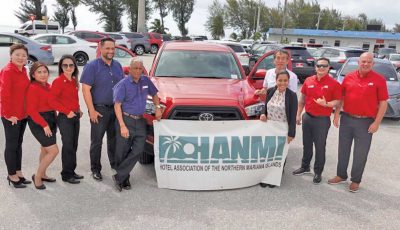Kicking the tires
When it comes to car culture, Saipan loses nothing to the mainland. So let’s kick the tires today. We’ll take a look at the December issue of Consumer Reports magazine, which offers predictions of new car reliability based on recent data from over 1 million car owners.
Consumer Reports has long been a best friend to car buyers, offering objective information on vehicle repair histories gleaned from surveys sent to vehicle owners. The April edition is traditionally the automotive edition and it’s always full of useful information. But April is a few long months away, so if you’re planning to get a new car for the new year, or if you just enjoy armchair driving, December’s issue is worth a look.
Here’s the first thing I looked up: Compact pickup truck ratings. Compact pickup trucks are as common as coconut trees on Saipan.
So it probably won’t surprise you that the Toyota Tacoma pickup truck tops the list for predicted reliability for compact pickups. Second to Toyota is Nissan.
Since we’re in the pickup truck realm, I’ll note that for full-sized pickup trucks, the Toyota Tundra tops the predicted reliability list. All the American brands, by unhappy contrast, are listed in the “below average” category. I don’t see the Ford F150 truck listed, so I’m going to assume that a total redesign of the truck means that there’s no track record on which to base a prediction.
Stepping back to the broadest picture, where things are summarized by brand, and not broken down by model, the rankings for predicted reliability put Lexus first, followed by Toyota and then Mazda. This is generally consistent with the experiences I’ve heard about in my circles. Lexus, incidentally, is Toyota’s premium label, so they are in the same family.
At the other end of the list, which is to say, the brands predicted to be least reliable, were Fiat, Jeep, and Ram. I believe that these names are all related these days, but I never kept up with it. I will note that the little Fiat 500 car is one of the coolest-looking cars on the road these days, so if you’re giving points for style, you’ll smile at this car.
Looking at the rest of the list, I’ll note that it has some real surprises on it, but you can buy the magazine if you’re interested, so I’ll leave it at that.
During the holidays I usually visit with various pals. Cars are always a topic of conversation, and during holiday gatherings, while everyone sensible is relaxing by the fireplace, the guys always gravitate to the garage, beers in hand, looking at the machinery: cars, trucks, and motorcycles. We grew up turning wrenches as shade tree mechanics, and we always liked Detroit iron.
And when I say iron, I mean iron. Iron heads. Iron blocks. Oh, yeah.
But those days are gone, relegated to coffee table picture books, photo albums, and boutique show rooms for rich enthusiasts. By contrast, I think modern cars are regarded more like appliances; nice to look at when they’re shiny, and certainly comfortable and useful, but I don’t think most people feel particularly attached to them.
As much as I liked the old-school iron, I will note some advantages of the more modern breeds.
Along those lines, I’ll note, first of all, that these days, even a mediocre car will often go 100,000 miles without any repairs and with only light maintenance.
Meanwhile, anti-lock brakes and four-wheel disk brakes are common, which is a lot better than the old lead-sled days when cars often had the braking performance of deep-draft supertankers.
And, close to heart for anyone on Saipan, air conditioning is pretty much standard nowadays, while in my youth it was usually an expensive luxury.
Although I don’t have any actual data for this, my experience leads me to suspect that many components such as hoses, belts, tires, and brake pads last a lot longer than they used to. Spark plugs, of course, can go 100,000 miles nowadays, which is nice.
People who claim to know such things have told me that today’s cars (at least in the U.S. market) produce pollution that is but a few percentage points of what cars used to belch out, so, whatever the numbers are, I’d say that any improvement is welcome improvement.
In our family, the record for miles driven falls to a Honda that has gone over 400,000 miles; second place goes to a Nissan that went over 350,000 miles. A Toyota and a Lexus have hit the 200,000 mile point, and I’m hoping my Ford will show the flag and hit the double-century mark.
If I had to name one “sleeper” brand in cars, I’d say that it’s Mazda. I’ve never owned one, but all the owners I’ve known have liked them immensely, so I wonder why I don’t see more of them these days. Also, Korean makers such as Hyundai and Kia are earning more respect all the time, placing ahead of the middle of the pack in the Consumer Reports ranking for new cars.
Well, so much for today’s glance at the new car scene. They paved paradise and put in a parking lot, so you might as well go for a drive, eh?



























